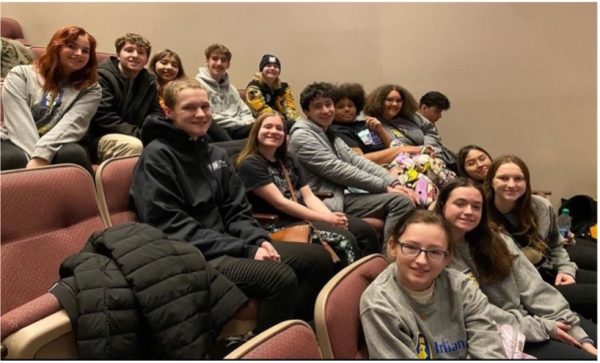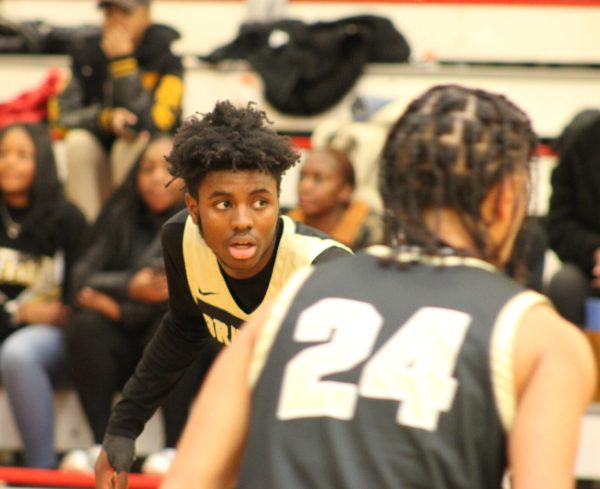Griffith Students Practice the Art of Taekwondo
January 24, 2019
Kihap (yell), Cha ryuht (attention), Kyung ye (bow), Choon bi (ready), Bah ro (return to starting position). These are all terms sophomore Elizabeth Lapointe has heard in Taekwondo, a Korean martial art. Tae means “foot,” Kwon means “fist,” and Do means “way of.” Altogether it means the way of the fist and foot.
In Taekwondo, one might do training which involves workouts, working on forms (in Korean poomsae), working with weapons such as the bo staff, a long wooden weapon traditionally made of oak or bamboo this weapon is used to block or strike an opponent. Workouts involve working legs, core/abdomen, and the back. Students also participate in sparring; students wear protective headgear, gloves, a chest guard, a mouth guard, and footgear. It teaches how to defend oneself against a human opponent opposed to a standing bag or a training BOB (Body Opponent Bag) There are many types of forms in Taekwondo. A couple examples include Songahm 1-5, In Wah 1, and Shim Jun. Songahm forms are also known as “color belt forms,” which are the forms students learn when they’re just starting out and as they advance. Shim Jun forms are black belts forms for the more experienced martial artist.
Students also test for their next rank every ten weeks. When you test you show sparring skills they’ve learned, the form they’ve been learning and if they’ve learned any weapons.
Lapointe has participated in Taekwondo for the last five years. Currently she is training at Region ATA in Highland, Indiana, as a second degree black belt, and will be going for her third degree in May of the year 2020. She trains five days a week. “I enjoy it because I feel safe when I walk out the door,” Lapointe said. She has competed and won ten tournaments. She enjoys competing because of the challenge, although it can be too difficult at times. “The hardest part about competing is how advanced the skills get as you move up the ranks,” said Lapointe.
Eighth grader Mason Rex also trains at Region ATA. “I like Taekwondo because I feel physically fit while training,” said Rex. He likes going to Region because it feels like one big family when you walk in, with how encouraging and friendly the instructors can be. “I get nervous when competing especially because of when I have to go up against multiple people in my ring,” said Rex. Sparring (free-form fighting), rounds in training last around one minute to a minute and thirty seconds. In tournaments, rounds last up to two minutes.
Taekwondo has many positive effects such as learning how to defend oneself and understanding the different ways that people can attack so someone would know what skills to use.












Emilio Ruiz • Jan 24, 2019 at 7:31 pm
very interesting. good to see kids being involved with something positive in their life. keep up the good reads!